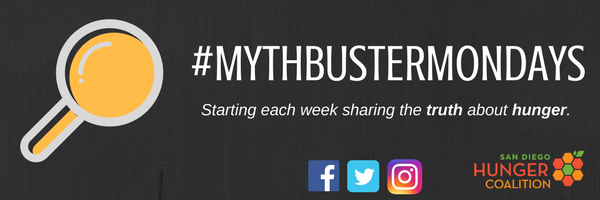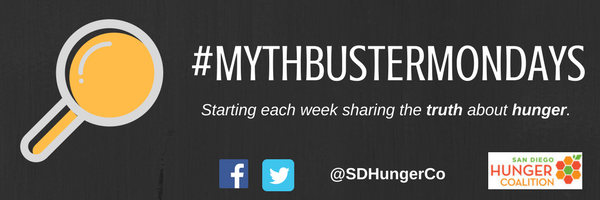These cuts to SNAP, are being disguised as “Harvest Boxes” that will support American farmers, but in reality, they would be filled with non-perishable and canned foods and be forced on to low-income families without any regard for their unique dietary needs and preferences. Read on for 13 reasons why these proposed food boxes take away support from private retailers and limit SNAP recipient’s access to fresh, nutritious food, in addition to being an inefficient way to meet food insecure people’s needs.
1) Trump’s plan distracts us from what really matters: the current administration is suggesting that we require everyone to work to receive public benefits while simultaneously cutting our nation’s education and workforce development budgets, making it harder for people to gain the skills required to find meaningful employment.
2) SNAP works; we don't need to "fix it." While the benefit amount could be increased, as a program, SNAP already works great. It generates the greatest economic activity than any other public program and has one of the lowest fraud rate of any government program, typically less than 2%.
3) Delivering food boxes to people's doorsteps is complicated, especially because low-income populations move a lot in search of affordable housing. Up to 20% of SNAP recipients must reapply because they don't receive their recertification paperwork in the mail. Are we willing to waste 20% of food boxes because people no longer live where they did when they signed up for the program?
4) Efficient delivery of food boxes to rural areas is unrealistic: there are places that even Amazon won't go. Why waste SNAP dollars to pay for the massive transportation infrastructure needed to distribute these food boxes when food distribution channels are already in place for grocery stores, where SNAP recipients can currently buy food.
5) Having people pick up food boxes is burdensome: Low income populations have more limited access to transportation. People receiving SNAP already need to grocery shop, the beauty of the current program is that they have additional dollars to spend where they already shop.
6) Charity programs have already spoken out and said that they do not have the capacity to administer a program like this on such a broad scale.
7) Pre-determined food boxes would reverse SNAP’s successful public-private partnership with some 260,000 retail who accept SNAP via EBT cards in favor of a government-driven approach. Currently, it is estimated that every $5 in new SNAP benefits generates as much as $9 in economic activity.
8) Making states develop programs to distribute the proposed food boxes is very difficult and will doom the project from the start. Many states barely have the infrastructure in place to help their residents access health care let alone design and deliver food boxes.
9) Predetermined food boxes result in massive food waste. Why give people items like dried milk when they can currently purchase the type of milk they actually want to drink at the grocery store?
10) Predetermined food boxes can't completely take into account food allergies, religious and cultural practices, or general dietary preferences. SNAP allows recipients to use resources in a way that works best for their family.
11) The distribution of predetermined food boxes is based on the idea that SNAP recipients don't know how to budget their money wisely and that the government can do a better job. However, research shows people use SNAP to make the same types of purchases as people who do not have SNAP. Under the current program, as people have a larger food purchasing budget, their overall purchases of nutritional foods like fresh fruits and vegetables increases.
12) Why force people to eat canned/boxed food when they can currently use SNAP to purchase and prepare more nutritious fresh food? While it’s easy to compare pre-determined food boxes to farm-to-table food delivery services like Blue Apron, the pre-determined food boxes included in Trump’s latest budget proposal would not include fresh fruit, vegetables, or meat. Additionally, comparing Trump’s food boxes to food delivery programs fails to account differences in price per meals between Trump’s proposal and programs like Blue Apron. While Blue Apron’s price per serving is $10, the price per meal for a SNAP Meal is just $1.40.
13) If Trump’s real intention is to help American farmers, there are other more effective ways to do so, including increasing funding to FINI grants, which encourage SNAP recipients to use their benefits to purchase locally grown, American produce.
It’s important to remember that the President’s budget proposal is only a blue print, not a final budget. However, if any of the structural changes or funding cuts to SNAP move forward it will significantly harm the millions of very-low income families, seniors, people with disabilities, and American workers who rely on the program. Click on the link to find and contact your representative and tell them to oppose cuts to SNAP in the budget and any other legislation. Cuts to programs that help struggling individuals and families meet basic needs is not a responsible approach to addressing our nation’s fiscal challenges.



























